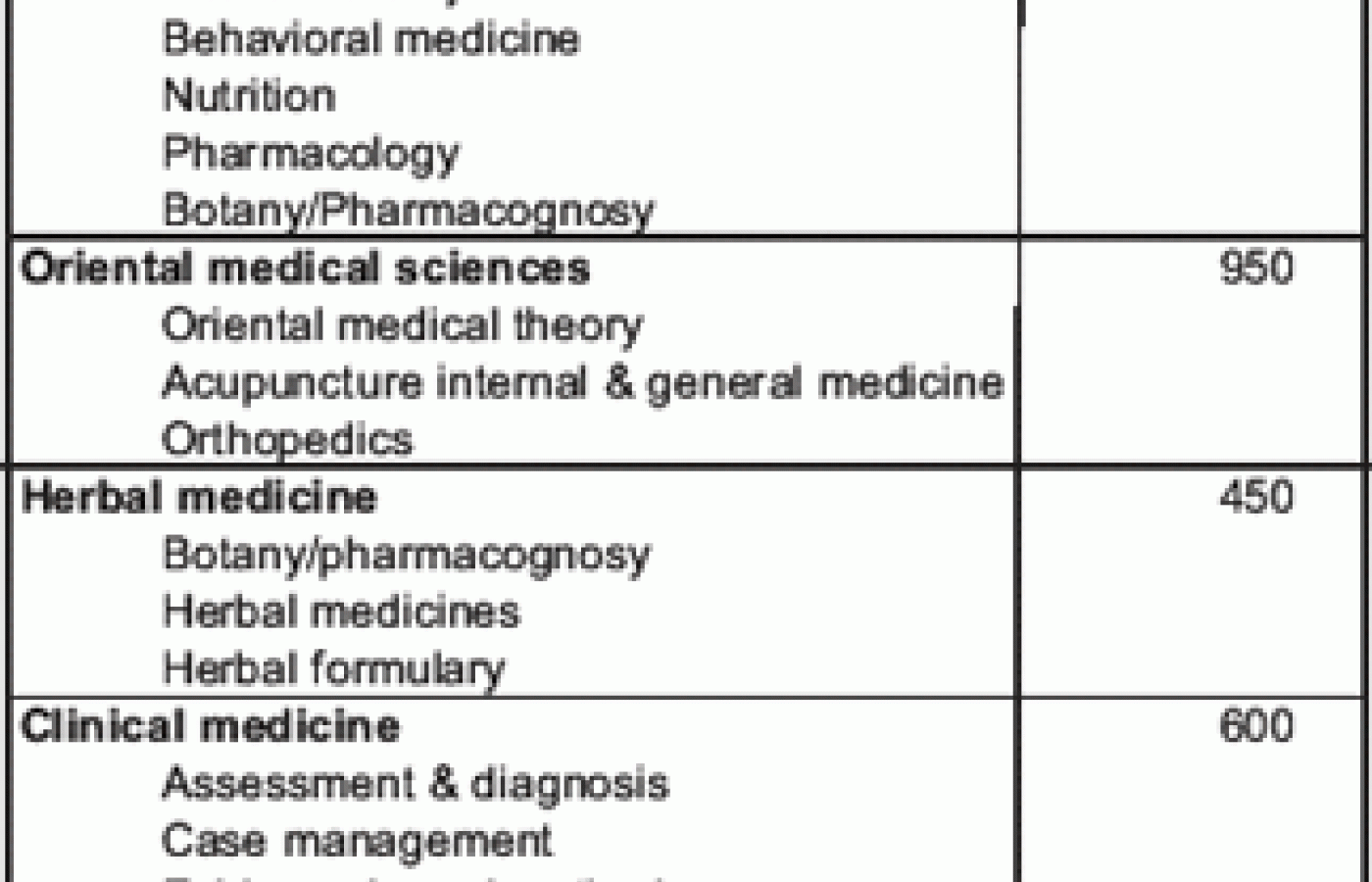Whether you accept it, avoid it or live somewhere in between, insurance coverage has become a defining issue for our profession. Patients increasingly expect to use their benefits, practitioners want to be compensated fairly for their time and expertise, and the system itself remains – at best – fragmented. The encouraging news is that coverage has expanded in meaningful ways. The challenging news is that reimbursement, across the board, remains inadequate.
NOMAA Makes Doctoral Program Criteria Available Online
The National Oriental Medicine Accreditation Agency (NOMAA) has published the standards and criteria for its doctor of Oriental medicine (OMD) professional degree program on its Web site (www.nomaa.org). The criteria include a minimum 4,000-hour curriculum for a terminal or entry-level doctoral degree, putting the degree on equal footing to those offered at Oriental medicine schools in China and South Korea, and representing a significant increase over the curriculum hours for master's degree programs in California and most other states. NOMAA has already gained the endorsement of the Council of Acupuncture and Oriental Medicine Associations and the Council on Oriental Medicine Education for the 4,000-hour curriculum.
The current draft of the curriculum for the doctoral degree was developed through several years of a process of considering input from members of the acupuncture and Oriental medicine profession and from various educational institutions in the United States and acknowledging the work of the California Acupuncture Board's Competencies Task Force. Some studies and reviews conducted over the past few years have indicated a need for improving educational standards, especially when one considers that there were no national programmatic standards for an entry-level OMD program prior to these being offered by the NOMAA. During the course of developing these standards, the California Acupuncture Board impaneled a Competencies Task Force (CTF) to recommend possible increased educational hours. Participants in the task force included professional organizations and schools in California as well as individuals from schools outside California and from related national organizations. NOMAA representatives also participated in this effort.
While developing the initial drafts of the curriculum, NOMAA board members paid particular attention to establishing educational requirements that the profession deemed sufficient to provide excellent training in the science, art and practice of Oriental medicine consistent with the ability to provide primary care services to patients, while increasing patient safety and welfare.
| Standard NOMAA OMD Curriculum | Hours of Study |
| Basic medical sciences Anatomy Physiology Pathology and pathophysiology Immunology Endocrinology Medical biochemistry Medical microbiology Neuroanatomy Behavioral medicine Nutrition Pharmacology Botany/Pharmacognosy | 500 |
| Oriental medical sciences Oriental medical theory Acupuncture Internal & general medicine Orthopedics | 950 |
| Herbal medicine Botany/pharmacognosy Herbal medicines Herbal formulary | 450 |
| Clinical medicine Assessment & diagnosis Case management Evidence-based methods Public health | 600 |
| Total didactic hours | 2,500 |
| Clerkship Clinical observation Supervised practice Monitored practice Electives | 1,500 |
| Total hours | 4,000 |
The curriculum requirements are based on the degree programs offered at Oriental medicine schools in China, which are considered the "gold standard" for Oriental medicine education worldwide. Curricula of professional schools in South Korea have also been considered throughout NOMAA's development process.
The latest version of NOMAA's doctoral degree curriculum consists of extensive training in basic biomedical sciences, Oriental medical sciences, herbal medicine, clinical medicine and related topics, all of which must be taught during the first eight semesters (or 11 quarters) of instruction. Institutions may elect to spread this phase of study out to three calendar years (see below).
The final 18 to 24 months of training consists of a comprehensive clerkship program, involving clinical training and emphasizing the development of high competency levels in clinical practice. At least 75 percent of the clinical training must take place in a clinical facility owned and operated by the institution offering the doctoral degree.
In addition to the above requirements, a course on the physiological basis of Oriental medicine is required early in the program of study to ensure that doctoral students consider various views of Oriental medicine. Students may also take non-credit elective courses that provide supplemental education in his or her particular area of interest.
Other Accreditation Criteria
Along with the required educational criteria, institutions seeking to be accredited by NOMAA must adhere to various other standards, including the following:
- Institutions shall articulate the guiding principles and objectives of its training program to students, along with the intended educational objectives for graduates, including expected acquisition of certain knowledge, skills, attitudes and behaviors.
- All institutions must formulate evidence-based medicine (EBM) methodology guidelines for its students, combining explicit, ethical use of the most current and best research available with clinical expertise in making decisions about the care and treatment of individual patients to deliver the best possible outcome.
- Institutions must follow competency-based training guidelines that allow outcomes assessment and evaluation of the level of knowledge, skills, values obtained by a doctoral student in the program of training.
- Each institution is required to use a standard grading and grade point average system consistent with the grading systems used by most colleges and universities.
- All institutions must establish clear rules regarding a student's leave of absence or withdrawal from the OMD program, and must specify what rules apply if and when the affected student chooses to re-enter the program.
Institutions are also encouraged to establish residency-training programs with hospitals in their local areas so that licensed OMD graduates can establish residency privileges to care for patients who may require hospitalization.
A more detailed summary of the NOMAA draft curriculum, including course descriptions, prerequisites and electives, has been published in the draft NOMAA Accreditation Handbook, available at the agency's Web site. Institutions that wish to apply for accreditation may visit www.nomaa.org to download an accreditation application. Interested parties are encouraged to visit the site to download a copy of the Handbook, and to learn more about NOMAA's mission, purposes and objectives.



